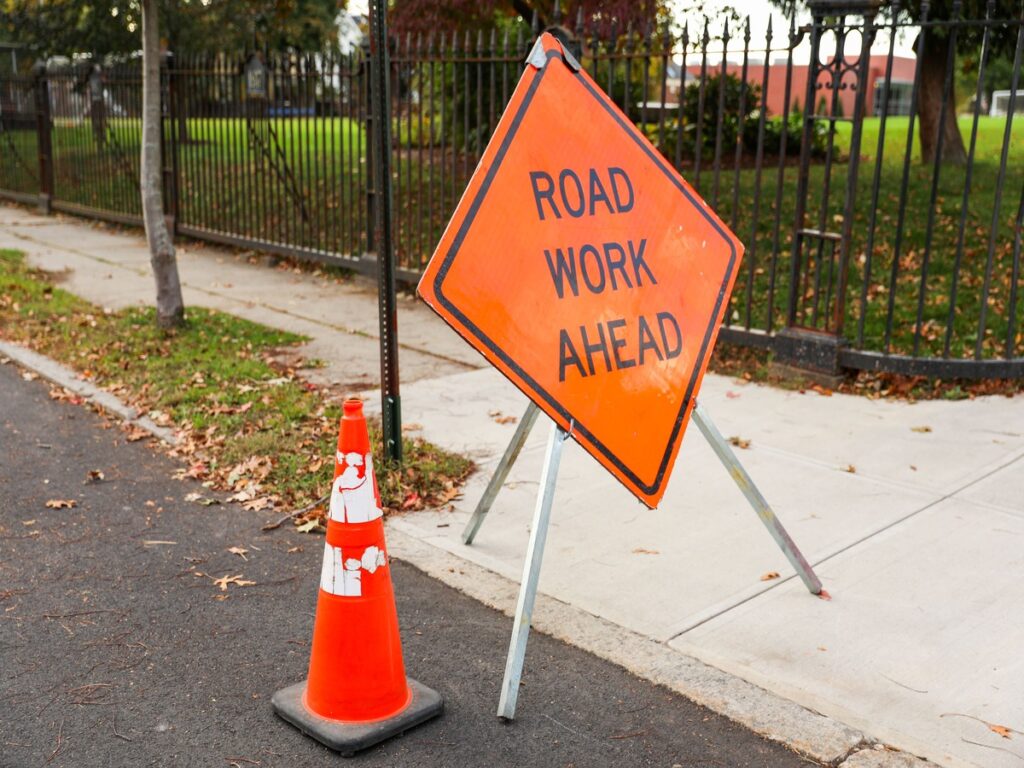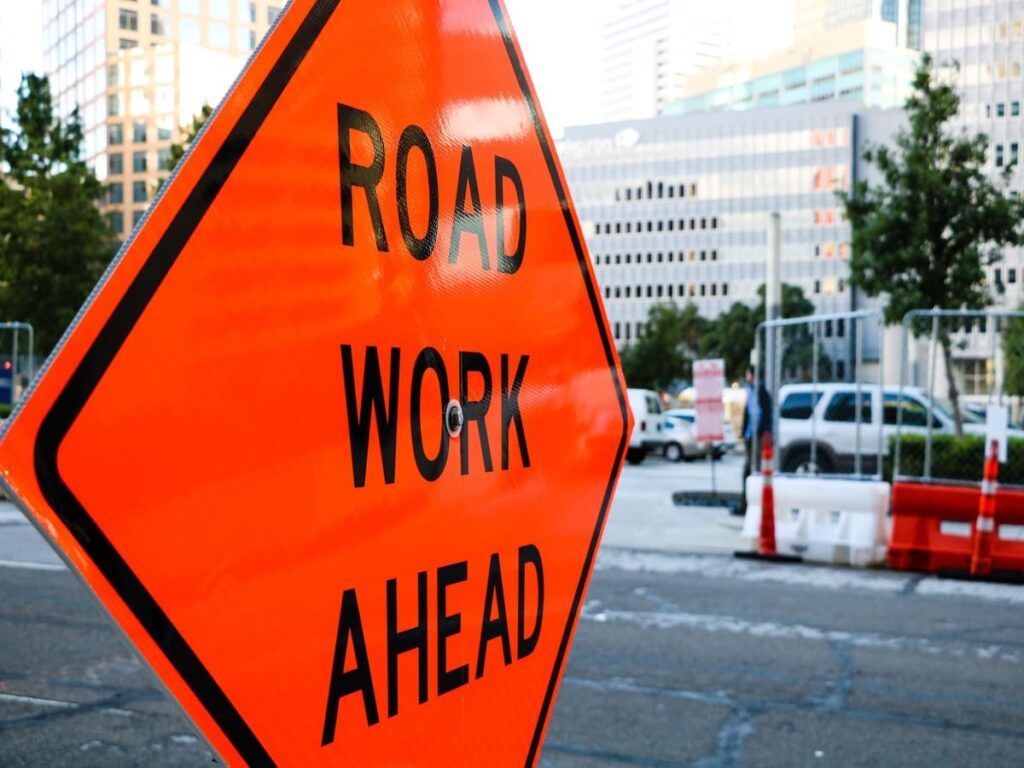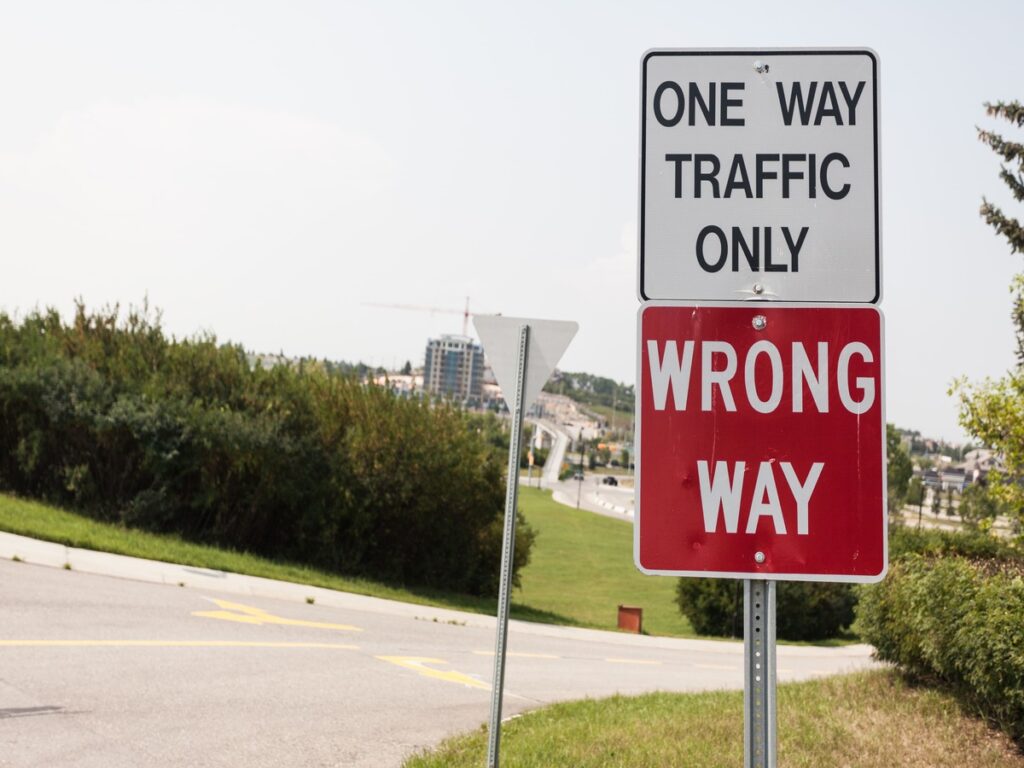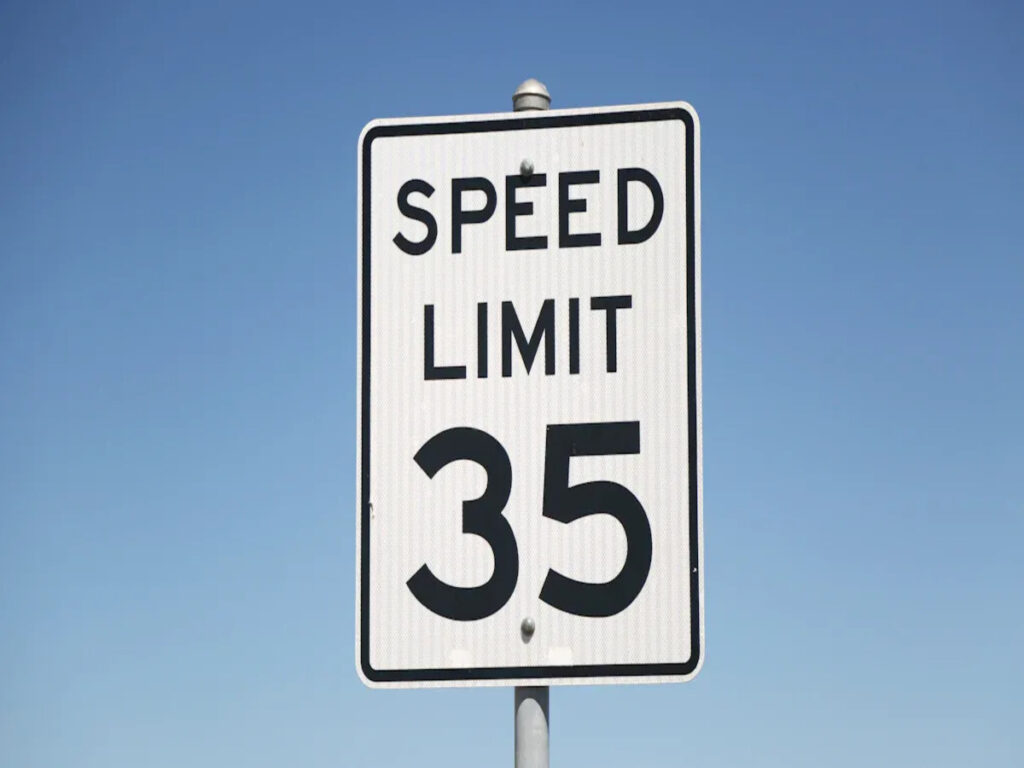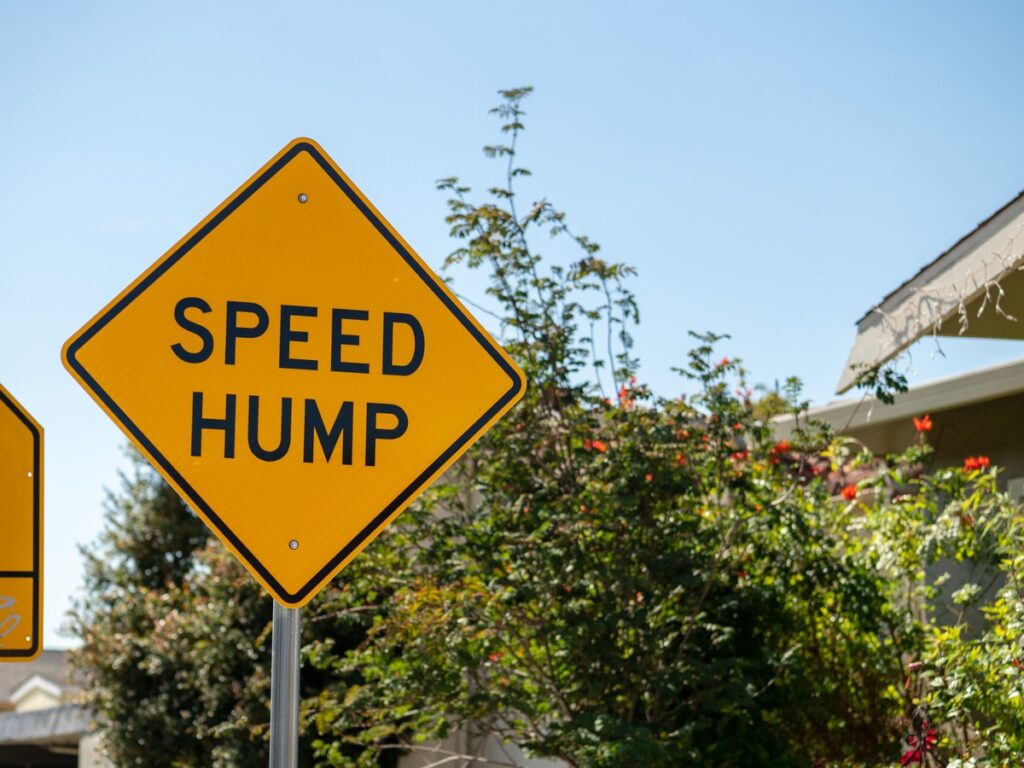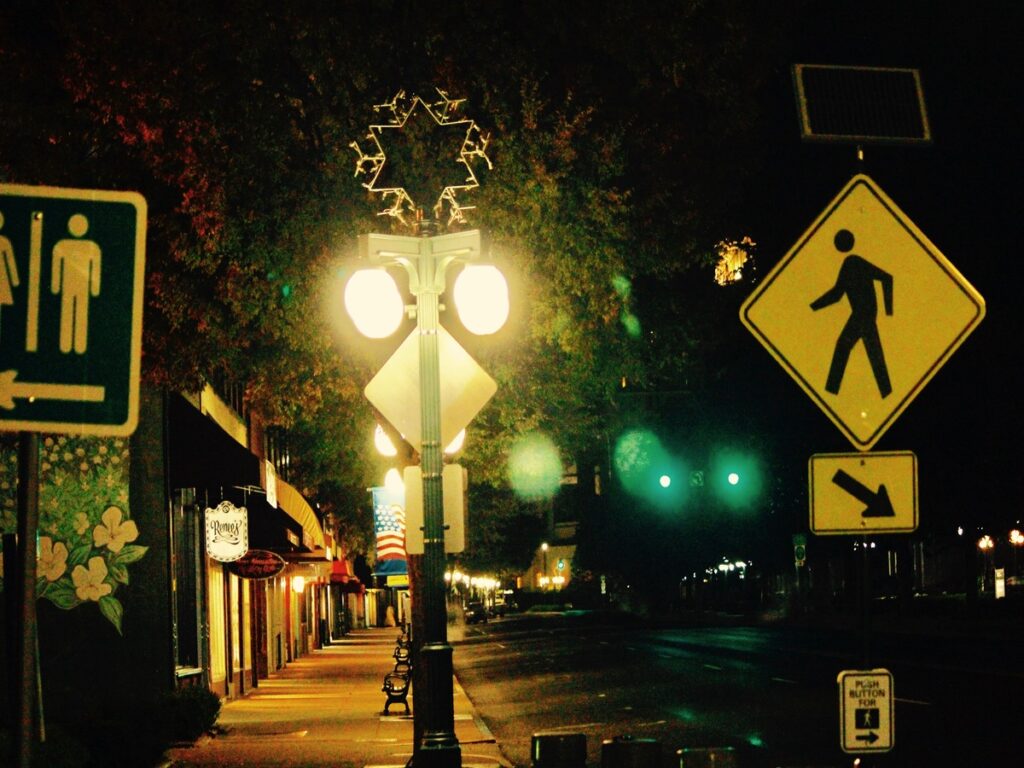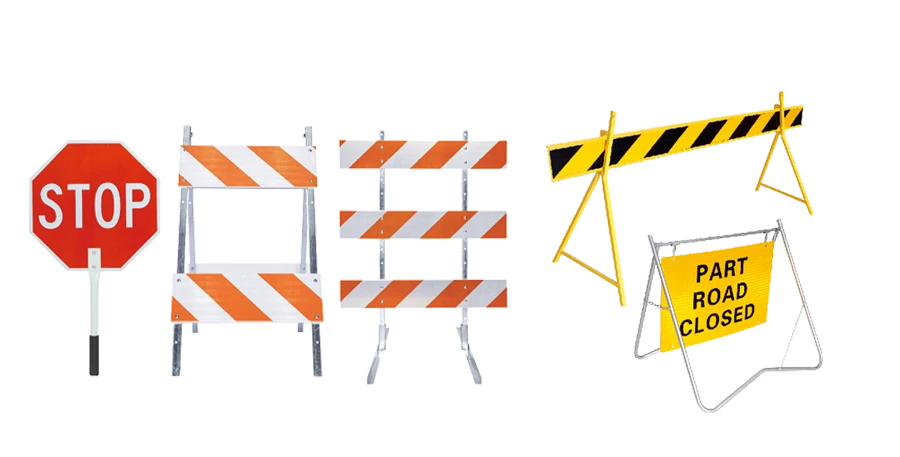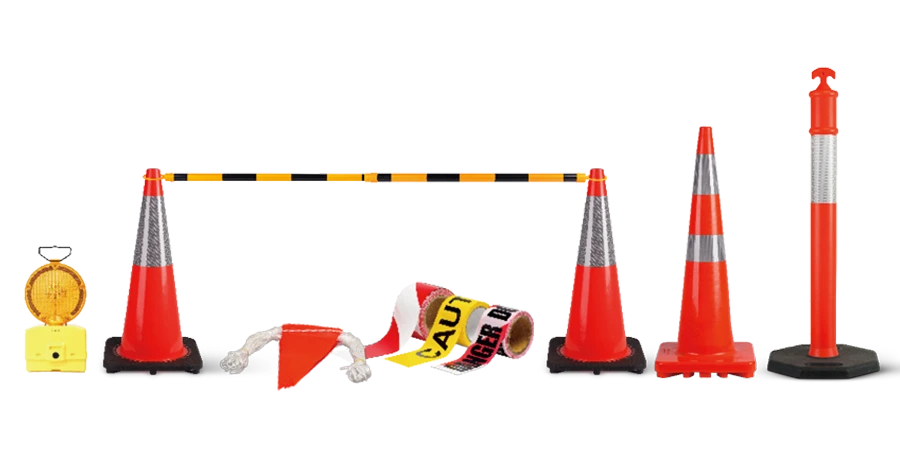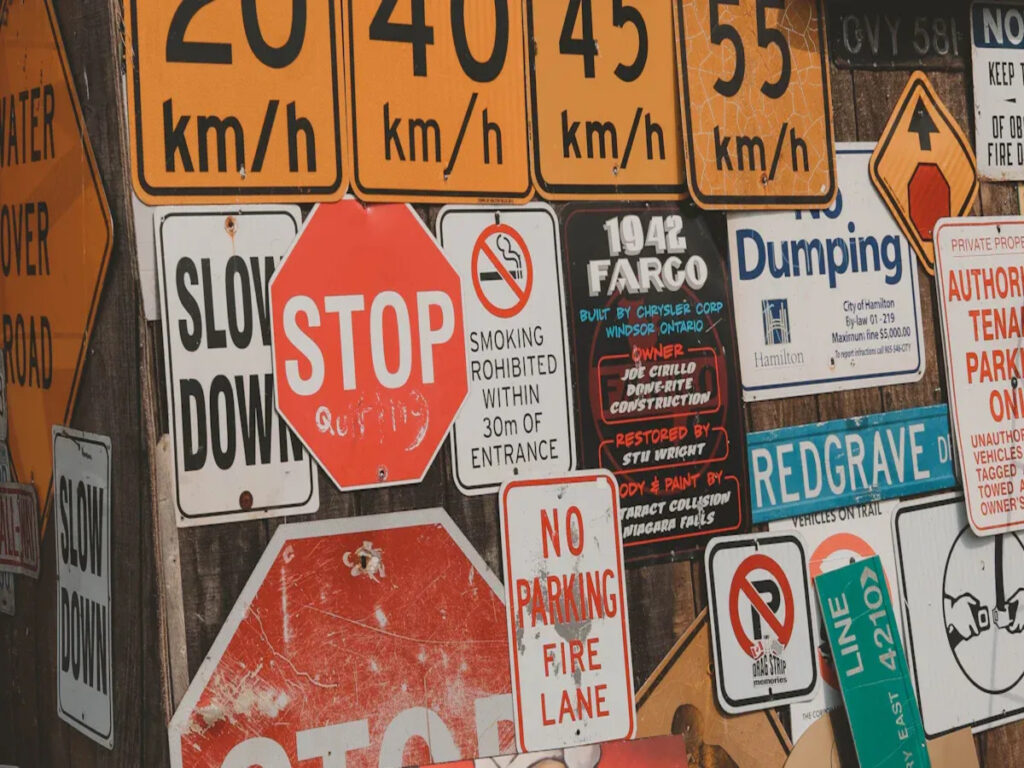
Vous utilisez des panneaux de signalisation routiers tous les jours pour rester en sécurité. Ces panneaux vous aident à savoir ce qui se passera sur la route. Quelques signes, comme un arrêt ou un rendement, sont vus partout. Les autres signes sont rares et spéciaux. Ce qui rend un signe rare? C'est là où c'est, règles spéciales, ou ne pas être beaucoup utilisé. Imaginez que vous voyez un panneau «Méfiez-vous des vaches invisibles». Ou peut-être que vous apercevez un panneau «Crossing d'OVNI». Ces panneaux drôles montrent comment les panneaux de signalisation routiers peuvent partager des blagues locales, dangers, ou culture.
Chez OPTRAFFIC, Nous offrons une large gamme de panneaux de signalisation Conçu pour la sécurité, clarté, et pertinence locale. Que ce soit une signalisation standard ou unique, Nous nous assurons que chaque panneau est durable et répond aux normes réglementaires. Explorez notre collection aujourd'hui pour les bons signes pour répondre à vos besoins!
Évolution des panneaux de signalisation routiers

Développement précoce
Les panneaux de route ne sont pas nouveaux. Les gens les ont utilisés il y a des milliers d'années. Rome ancienne, Perse, Et l'Inde a mis des marqueurs sur les routes. Ceux-ci ont aidé les voyageurs à savoir où aller. Une étape romaine de 120-211 L'annonce est dans la bibliothèque britannique. Il a donné des instructions et des détails officiels. La pierre a montré à quel point c'était à Kanovium. Il a également nommé l'empereur en charge. Ces marqueurs ont aidé les gens à voyager et ont montré qui s'occupait de la route. Au Moyen-Orient, La dynastie Omeyyade a utilisé des marqueurs de marbre près de Jérusalem. Ces anciens signes étaient importants pour les voyages, commerce, et sécurité avant les voitures.
Saviez-vous? Les jalons anciens avaient souvent le nom du souverain et les conseils de voyage. Cela a aidé les gens à connaître leur emplacement et leur distance aux endroits.
Change avec le temps
Les voitures ont rendu les routes plus occupées et moins sûres au début des années 1900. Les gens avaient besoin de nouvelles façons de rester en sécurité et de suivre les règles. Les premiers panneaux routiers étaient simples. Ils étaient du bois avec des mots peints. Comme plus de gens conduisaient, Les signes sont devenus déroutants. Différents endroits ont utilisé différents signes. Dans les années 1920, Les groupes ont établi des règles pour les signes. Ils ont choisi des formes et des couleurs pour des messages clairs. Les formes de diamant signifiaient la prudence. Les rectangles ont donné des instructions.
Voici comment les panneaux de signalisation ont changé au fil du temps:
- Le premier panneau d'arrêt a été fabriqué dans 1915. C'était un petit rectangle blanc avec des lettres noires.
- Dans 1923, Le panneau d'arrêt a changé en octogone rouge. Cela a facilité la voir.
- Le Manuel sur les dispositifs de contrôle de la circulation uniformes (Mutcd) est sorti 1935. Il définit les règles pour les formes de signe, couleurs, et symboles.
- Les matériaux se sont améliorés. Signes changés du bois et du fer à l'aluminium avec du plastique. Cela les a rendus durer plus longtemps et plus faciles à voir la nuit.
- Matériaux réfléchissants remplacés en verre réflecteurs. Cela a rendu les signes plus lumineux la nuit.
- Aujourd'hui, Les signes électroniques donnent des mises à jour en temps réel. Ils peuvent se connecter avec les systèmes de navigation automobile.
Vous voyez des panneaux de circulation routière partout maintenant. Leur conception et leurs matériaux changent continuent de changer. Cela aide à rendre les routes plus sûres et plus faciles à utiliser.
Définir des panneaux routiers rares
Ce qui rend un signe rare
Vous vous demandez peut-être pourquoi vous ne voyez des panneaux de signalisation d'une fois de temps en temps. Plusieurs facteurs décident si un signe est rare.
- Emplacement: Certains panneaux n'apparaissent que dans des endroits spéciaux. Par exemple, Vous pouvez repérer un “Réservoir” signe près des terrains d'entraînement militaire ou un “Ford à l'avance” Signer près des rivières.
- Fréquence: Certains signes apparaissent moins souvent parce que la situation dont ils mettront en garde ne se produit pas beaucoup. UN “Traversée de niveau ferroviaire sans porte ni barrière” Le panneau apparaît généralement sur des routes tranquilles, Autoroutes pas très fréquentées.
- Règlements spéciaux: Certains signes existent à cause des règles uniques. UN “Pas de véhicules” Le panneau permet uniquement aux personnes qui poussent les vélos à entrer. D'autres panneaux de route inhabituels mettent en garde contre les chevaux sauvages, volaille sauvage, ou véhicules militaires. Ces panneaux correspondent aux lois locales spéciales ou aux dangers rares.
Quand vous voyez des panneaux routiers rares, Vous savez que quelque chose d'inhabituel ou d'important est à proximité. Ces panneaux vous aident à rester alerte et en sécurité dans des endroits avec des risques spéciaux.
Global VS. Rareté locale
Tous les panneaux de route rares ne sont pas rares partout. Certains signes sont rares dans le monde, tandis que d'autres ne sont rares que dans certains pays ou régions.
- Les panneaux routiers à l'échelle mondiale sont souvent très différents de ce que vous voyez dans la plupart des endroits. Par exemple, Le Japon utilise un panneau d'arrêt en forme de triangle à l'envers. Le Népal a un signe d'arrêt octogonal rouge sans mots ni symboles. Papouasie-Nouvelle-Guinée utilise un panneau d'arrêt avec une forme que vous ne trouverez nulle part ailleurs.
- Les panneaux de circulation routière rarement rares reflètent la culture locale, animaux, ou langue. En Australie, Vous pourriez voir un panneau de croisement de kangourou. Aux États-Unis ou en Russie, vous pourriez trouver un signe d'alerte d'ours. L'Afrique du Nord utilise des signes de chameau, et l'Afrique du Sud a des signes d'éléphants ou de lions. Certains pays ont même des panneaux de passage pour piétons spéciaux, Comme les jambes de marche d'Australie ou les vêtements traditionnels du Qatar. Les États-Unis ont un signe de passage immigrant, tandis que la Finlande met en garde contre la glace fragile avec un panneau appelé “Méfiez-vous des zombies finlandais.”
Vous pouvez voir que les panneaux de route rares vous parlent des caractéristiques uniques d'un endroit. Quand tu voyage, Vous pouvez repérer des signes qui n'existent pas ailleurs. Ces signes vous aident à comprendre les dangers locaux, culture, et les règles.
Types de panneaux routiers rares
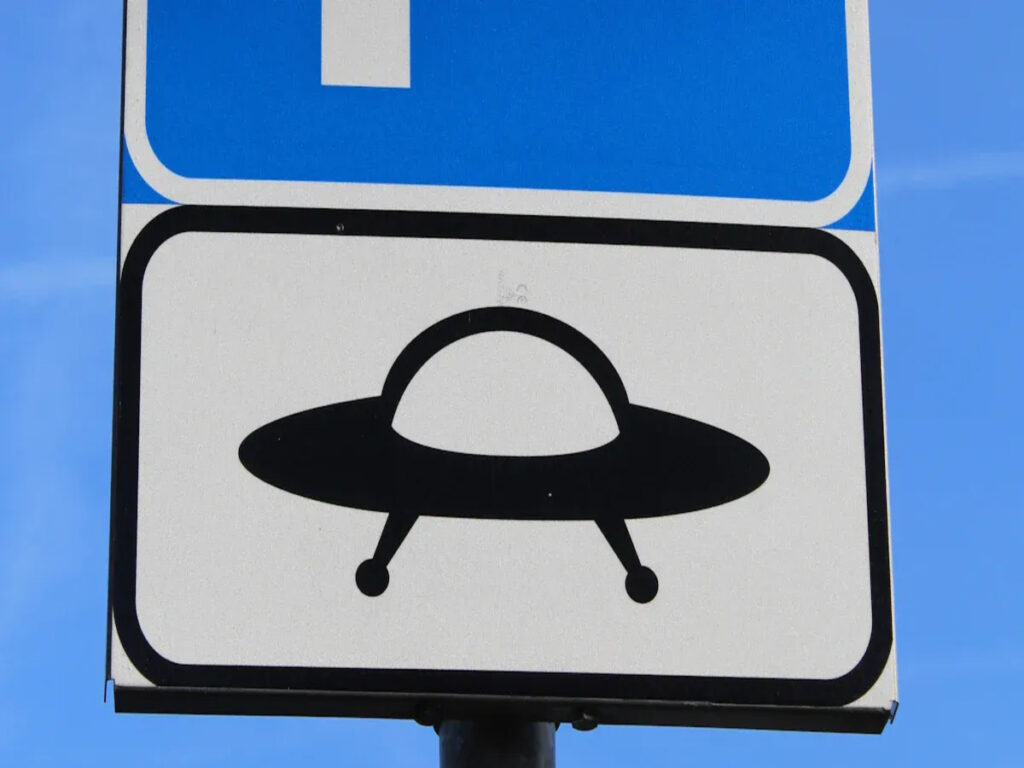
Avertissements animaux
Signes d'avertissement d'animaux se présenter où vivent les animaux spéciaux. Ces panneaux vous aident à ne pas frapper les animaux traversant la route. L'Australie est célèbre pour les signes d'avertissement animaux. Vous pouvez voir le kangourou, wallaby, wombat, koala, émeu, Casoar, échoue, et des signes de dingo sur les routes de campagne. Chaque endroit utilise des panneaux pour les animaux qui y sont trouvés. Le tableau ci-dessous vous indique où ces panneaux de signalisation routiers sont courants:
| Région | Signe d'alerte animal le plus commun | Animaux représentés |
|---|---|---|
| Victoria | Kangourou | Kangourous |
| Nouvelle-Galles du Sud | Kangourou | Kangourous |
| Queensland | Kangourou | Kangourous |
| Australie-Occidentale | Kangourou | Kangourous |
| Australie du Sud | Kangourou | Kangourous |
| Tasmanie | Wallaby | Wallabies |
| Territoire de la capitale australienne | Kangourou | Kangourous |
| Territoire du Nord | Kangourou | Kangourous |
D'autres endroits utilisent des panneaux d'avertissement d'animaux pour l'orignal en Finlande, Éléphants en Thaïlande, ou chameaux en Afrique du Nord. Ces panneaux montrent ce que les animaux vivent à proximité et aident à protéger les conducteurs et les animaux. Ralentissez lorsque vous voyez ces panneaux de circulation routière, surtout tôt ou tard dans la journée.
Les panneaux d'alerte d'animaux peuvent changer la façon dont vous conduisez. Les panneaux avec des lumières clignotantes ou des mots spéciaux attirent votre attention plus que les signes normaux. Certains signes s'allument lorsque les animaux sont proches. Ces choses vous aident à réagir plus rapidement et peuvent arrêter de mauvais accidents.
Signes d'urgence et d'incident
Des panneaux d'urgence et d'incident rares vous avertissent des dangers soudains. Certains panneaux n'apparaissent que dans certains endroits. Voici quelques exemples:
| Pays / région | Panneau d'urgence rare / routier incident | Description |
|---|---|---|
| Grèce | Rochers | Met en garde contre les rochers tombant dans les montagnes. |
| Espagne | Traverse du sanglier | Vous dit que les sangliers pourraient traverser la route. |
| Suède, Estonie, Finlande, Norvège | Traverse | Met en garde contre les wapitistes, principalement à l'automne. |
| Royaume-Uni | Traversée de crapauds migrateurs | Vous dit de surveiller les crapauds au printemps. |
| États-Unis | Rampe d'évasion des véhicules en fuite | Montre où les camions peuvent s'arrêter si les freins échouent. |
| États-Unis (New Mexico, Nevada) | Zone de vents à l'origine | Met en garde contre les vents forts qui poussent les voitures. |
| Divers | Restriction des matériaux inflammables | Interdire les véhicules avec une cargaison dangereuse. |
Vous pourriez voir des signes rose vif pendant les urgences. Ces signes se distinguent parce qu'ils sont très brillants. Ils vous préviennent des déversements chimiques, travail de police, ou routes d'ouragan. Les signes roses vous aident à voir le danger rapidement, ce qui est important dans les urgences.
Fluorescent pink signs are easy to spot and help you act quickly. They guide you safely when something unexpected happens.
Unusual Prohibitions
Some road signs show rules you do not see often. These special rules keep you safe in certain places. Par exemple, you may see a sign that bans vehicles with flammable materials from tunnels. This rule helps protect people if there is a fire.
Aux États-Unis, officials do not allow jokes or funny messages on electronic highway signs. Jokes can distract you and make driving unsafe. Serious messages help you pay attention and avoid mistakes.
You may also see road signs that ban U-turns or left turns only at certain times or places. These signs often show up near railway crossings or busy streets. They help stop crashes and keep traffic moving.
Temporary and Event Signs
Les panneaux temporaires et d'événement ne se présentent que pendant une courte période. Vous pouvez les voir pendant le travail de la route, défilés, concerts, ou urgences. Ces panneaux routiers utilisent des couleurs vives, feux clignotants, ou des formes spéciales pour attirer votre attention. Par exemple, Vous pourriez voir les signes de roll-up, signaux portables, ou planches de flèches montrant un détour.
Les signes temporaires vous aident à apprendre de nouveaux modèles de trafic. Ils vous parlent des fermetures de voies, limites de vitesse, ou changements près des passages à niveau. Pendant les grands événements, Ces panneaux maintiennent le trafic en mouvement et arrêtent la confusion. La police et les travailleurs les utilisent pour diriger les voitures et assurer la sécurité des gens.
Les panneaux de signalisation temporaires aident à protéger les routes lors d'événements spéciaux. Ils vous aident à éviter des accidents et à vous assurer de savoir quoi faire lorsque les choses changent.
Impact sur la sécurité routière
Importance de la reconnaissance
Vous devez reconnaître rapidement les panneaux de route pour rester en sécurité. Lorsque vous apercevez un signe rare ou unique, Votre cerveau fait plus attention. Des études récentes montrent que les signes avec des couleurs vives ou des formes spéciales attirent votre œil plus rapidement. Vous regardez ces signes plus longtemps, Ce qui vous aide à comprendre ce qu'ils signifient. C'est très important la nuit ou par mauvais temps. Si vous voyez un panneau tôt, Vous avez plus de temps pour réagir. Par exemple, Une étude Caltrans a révélé que les conducteurs plus âgés qui reconnaissent les signes plus tôt peuvent réagir 1.5 secondes plus vite. Ce temps supplémentaire peut vous aider à éviter un crash, especially in work zones.
Conseil: Recherchez des lettres plus grandes et des symboles clairs sur les signes. Ces fonctionnalités facilitent les signes de la loi, vous donner plus de temps pour décider quoi faire.
Certains signes sont difficiles à voir ou à comprendre. Si vous manquez un signe, Vous pourriez freiner soudainement ou faire un mauvais virage. Nouvelle technologie, comme les alertes de smartphone, peut vous avertir des signes à venir. Ces alertes vous donnent plus de temps pour remarquer et réagir, ce qui vous aide à garder la sécurité.
Sécurité et sensibilisation
Savoir ce que signifient les panneaux routiers rares vous aide à faire de meilleurs choix. Lorsque vous comprenez un signe, Vous pouvez suivre les règles et éviter le danger. Cependant, Certains signes confondent les conducteurs. Le tableau ci-dessous montre des malentendus communs:
| Signe ou signal | Erreur courante | Ce que ça signifie vraiment |
|---|---|---|
| Tournez à gauche, Cédez le passage au vert | Aller sans prudence | Rendement à d'autres trafics avant de tourner à gauche |
| Épaule | Ignorer l'avertissement | Le bord de la route est doux et dangereux pour conduire |
| Aucun véhicule à moteur autorisé | Pensez que seules les voitures et les motos sont autorisées | Aucun véhicule à moteur ne peut entrer |
| Céder | Il suffit de ralentir | Rendre ou arrêter si nécessaire pour éviter un crash |
| Pas d'attente | Pas d'arrêt du tout | Vous pouvez vous arrêter brièvement, mais pas de gare pendant longtemps |
Vous pouvez voir que les malentendus d'un panneau peuvent conduire à des actions dangereuses. Quand tu voyage, Vous pouvez voir des signes que vous ne connaissez pas. Prenez le temps de vous renseigner sur les panneaux locaux avant de conduire dans un nouvel endroit. Cela vous aide à rester alerte et à éviter les erreurs.
Note: Bien conçu, Les signes uniques vous aident à traiter les informations plus rapidement. Ils peuvent réduire les risques d'accident, Mais trop de panneaux déroutants peuvent rendre les routes moins sûres. Faites toujours attention et essayez de comprendre chaque signe que vous voyez.
Vous ne voyez pas souvent de panneaux de circulation routière rares. C'est parce qu'il y a des règles et des lois strictes. La nouvelle technologie limite également le nombre de signes rares utilisés. Lorsque vous visitez de nouveaux endroits, vous devriez en apprendre davantage sur les signes locaux. Vous devez surveiller les signes que vous n'avez jamais vus auparavant. La formation et les cours publics vous aident à connaître les panneaux d'autres pays. Le graphique ci-dessous montre comment les gens de Taïwan et du Vietnam ont appris les signes rares après l'entraînement.
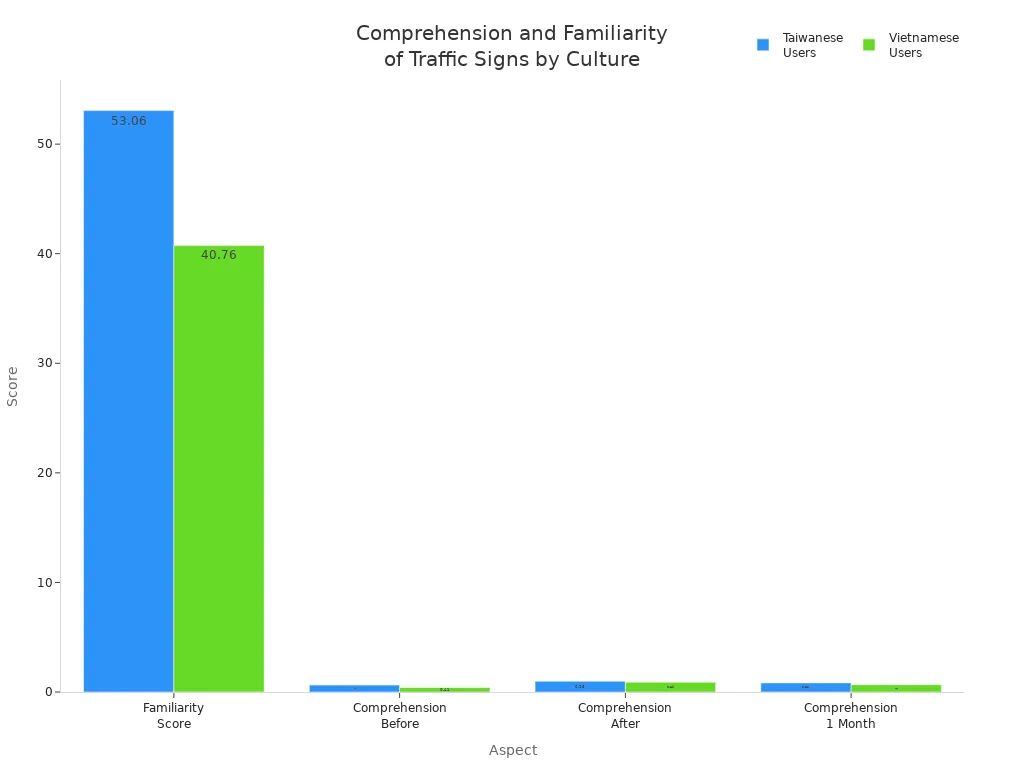
Savoir comment les signes ont changé et à quel point ils sont différents vous aide à mieux conduire. Vous pouvez vous sentir en sécurité et sûr lorsque vous comprenez les panneaux à n'importe quel endroit.
FAQ
Ce qui rend un panneau de route rare?
Vous voyez des panneaux de route rares dans des endroits avec des règles ou des dangers spéciaux. Ces signes n'apparaissent souvent que dans certaines régions ou lors d'événements spécifiques. Vous pouvez les repérer près des passages sauvages, zones militaires, ou sites de construction temporaires.
Pourquoi certains pays utilisent-ils des panneaux d'avertissement animaux?
Vous trouvez des signes d'avertissement d'animaux où les animaux traversent souvent les routes. Les pays utilisent ces signes pour protéger les conducteurs et la faune. Par exemple, Vous pourriez voir des panneaux de kangourou en Australie ou des panneaux d'orignal en Suède.
Comment pouvez-vous reconnaître un panneau de route temporaire?
Vous remarquez des panneaux de route temporaires par leurs couleurs vives, feux clignotants, ou des formes inhabituelles. Les travailleurs utilisent ces panneaux pendant les travaux routiers, événements, ou urgences. Ralentissez toujours et suivez les instructions lorsque vous les voyez.
Les panneaux de route rares améliorent-ils la sécurité?
Vous restez plus en sécurité lorsque vous comprenez les panneaux de route rares. Ces panneaux de sécurité routière vous avertissent des risques ou des changements spéciaux. Ils vous aident à réagir rapidement et à éviter les accidents dans des situations inconnues.
Que devriez-vous faire si vous voyez un panneau routier que vous ne savez pas?
Conseil: Prenez un moment pour lire attentivement le panneau. Recherchez des symboles ou des mots qui expliquent le sens. Si vous vous sentez incertain, Ralentissez et restez vigilant jusqu'à ce que vous compreniez quoi faire.

